In this episode, Kristen Eglintine, BESLER’s Senior Manager of Revenue Integrity Services of Coding and Projects, provides us with a glimpse into BESLER’s upcoming webinar, Key Insights from the OIG Work Plan, hosted live on August 6, at 1 PM ET.
Podcast (hfppodcast): Play in new window | Download
Learn how to listen to The Hospital Finance Podcast® on your mobile device.Highlights of this episode include:
- Overview of the OIG
- Core focus areas of the OIG Work Plan for 2025
- Specific coding issues that the OIG is focusing on in 2025
- Why coding and documentation are issues in recent OIG audits
- Vulnerability areas for PAD procedures
- Why diagnosis of malnutrition is a continued focus of the OIG
- Why these documentation and coding errors do matter for hospitals
Kelly Wisness: Hi, this is Kelly Wisness. Welcome back to the award-winning Hospital Finance Podcast. We’re pleased to welcome back Kristen Eglintine, BESLER’s Senior Manager of Revenue Integrity Services of Coding and Projects. In this episode, Kristen will provide us with a glimpse into BESLER’s upcoming webinar, Key Insights from the OIG Work Plan, that we’re hosting live on Wednesday, August 6th, at 1:00 PM Eastern Time. Welcome back, and thanks for joining us, Kristen.
Kristen Eglintine: Hi, Kelly. Thank you. I’m really happy to be back.
Kelly: We’re happy to have you. Let’s go ahead and jump in today. So, you’re co-hosting an upcoming webinar, Key Insights from the OIG Work Plan for 2025, with Mary Devine, our VP of Revenue Integrity. Would you provide us with an overview of the OIG?
Kristen: Absolutely. So, all of us in healthcare know the name and what the OIG generally does, but may not fully be versed in the specifics of their work. So, let’s first define what the OIG is. The OIG is the Office of Inspector General. It’s an independent agency within the US Department of Health and Human Services. And its fundamental mission is to protect the integrity of federal health programs, such as Medicare and Medicaid, and to ensure the well-being of the program beneficiaries. The OIG issues work plans, and for 2025, the work plan outlines the agency’s audit, evaluation, and enforcement priorities for the upcoming year. These priorities are designed to address emerging risks. They ensure compliance; they promote integrity across federal health programs, especially Medicare and Medicaid. The work plan is updated regularly to reflect new risks and enforcement trends. And then, in addition to the new work plans, the OIG does maintain a set of ongoing priorities that reflect persistent challenges and areas of risk within the federal health programs. These continuing priorities guide audits and evaluations and enforcement activities throughout the year, ensuring that long-lasting vulnerabilities are addressed. Understanding the OIG’s work plan and what preventative steps you and your organization can take to be compliant and avoid an audit is so smart. This is such a great topic, and I just appreciate being here to talk about it today.
Kelly: Well, thank you for explaining what the OIG is. That was a great overview. So, what are the core focus areas of the OIG Work Plan for 2025?
Kristen: At a very high level, the 2025 OIG Work Plan continues to emphasize oversight of Medicare and Medicaid managed care, nursing home quality, grants and contracts management, and payment integrity. Emerging areas do include telehealth services, drug pricing reforms, and enhanced data analysis for fraud detection. The OIG’s plan is dynamic. So it’s updated monthly, and it does address new risks and evolving trends in healthcare compliance and enforcement.
Kelly: Sounds pretty important to stay on top of. So what are some of the specific coding issues that the OIG is focusing on in 2025?
Kristen: For 2025, some high-priority coding issues that I will go over in our webinar are minimally invasive outpatient procedures for peripheral arterial disease, or PAD, as we will say, and severe malnutrition for inpatient encounters. Minimally invasive outpatient procedures for PAD, often called lower extremity revascularization procedures, are under enhanced scrutiny in the 2025 OIG Work Plan. These interventions, such as angioplasties, atherectomies, and stenting…they’re designed to improve blood flow in patients whose arteries have become narrowed or blocked due to PAD. They’re typically performed after conservative management, which are lifestyle modifications or exercise, for example, when these conservative management treatments have failed and when patients experience lifestyle-limiting symptoms.
Kelly: Wow, thank you for sharing those with us. And I’m glad you’re saying a lot of those words and not me. [laughter] So, why are coding and documentation issues such a frequent target in recent OIG audits?
Kristen: Yeah, well, great question. So, coding and documentation deficiencies remain a leading reason for improper payments across Medicare programs. And here are some stats. So, in traditional Medicare and Medicare Part D, insufficient or missing documentation accounted for over 68% and 73% of improper payments, respectively. For Medicare Advantage, up to 85% of payment errors were due to medical record discrepancies, often from unsupported diagnosis codes or missing records backing the submitted codes. The OIG targets these areas to reduce overpayments and improve program integrity.
Kelly: Well, that makes sense why they would target those, then. So can you give us some examples of vulnerability areas for PAD procedures?
Kristen: Yeah, great question again. So, in regards to coding and documentation, hospitals or clinics, or providers even, are vulnerable when they bill for services where documentation does not support medical necessity. Another area is when they use diagnostic angiography codes in the same session as revascularization procedures, and they don’t meet the strict criteria. So, they aren’t using the correct CPT code or a modifier, for example. Repetitive procedures or excessive frequency not justified in the clinical record is another area. And then finally, I’d say inadequate or just missing records to substantiate the intervention.
Kelly: Great. Thank you for sharing that with us. And so, what are some documentation requirements for PAD procedures?
Kristen: I would say to ensure compliance and reduce denial risk, documentation for minimally invasive outpatient PAD procedures must include some of the following. So, description of the procedures and studies. So, we are looking for details on all of the studies performed, including any imaging, the contrast media, and/or the radiopharmaceuticals used. We want documentation on findings and comparisons. So, both normal and abnormal findings, as well as a comparison with any other prior studies relevant to the current episode. We are looking for documentation for medical necessity. So clear justification for the intervention. Some examples are: did they fail the conservative therapies? Do they have ongoing symptoms? Is there imaging evidence of the disease? And then any clinical questions addressed. So, documentations should specifically address questions or reasons for the procedure as far as patient symptoms. What type of conservative treatment did they do? And for how long? And then finally, documentation should include any adverse events or complications. So, does the patient have any reactions or complications, or how were they managed? This list is representative of required documentation, but it is not all-encompassing, but it gives you an idea of what we’re looking for.
Kelly: Thank you for diving into that for us. So earlier you mentioned the diagnosis of malnutrition is a continued focus of the OIG. Why do you think that is?
Kristen: Yeah, so that’s going to be another topic on the webinar as well. Inpatient malnutrition remains a focus because previous audits uncovered widespread improper billing for severe malnutrition diagnosis codes. The OIG found that assigning severe malnutrition as a major complication or comorbidity often led to inflated hospital payments, with an estimated 1 billion in overpayments during fiscal year 2016 and 2017. That’s a lot of money. This issue persists, prompting the OIG to continue its scrutiny in 2025 to ensure hospitals follow proper coding guidelines and documentation standards.
Kelly: Well, given that figure, that makes a lot of sense to me why they would be focusing on that. So how does the OIG determine if a claim for severe malnutrition is valid?
Kristen: The OIG uses two clinical criteria. So, they will either use the ASPEN criteria or the GLIM criteria to judge clinical validity. They review whether the medical record clearly documents that the patient meets the stringent criteria for severe malnutrition. They are looking for treatment to match the intensity and complexity expected. And they’re looking that there’s a clear link between the documentation, the diagnosis, and the billed code. If any of these elements are missing or not sufficiently detailed, the claim is often denied or adjusted.
Kelly: Makes sense. So why do these documentation and coding errors matter for hospitals?
Kristen: Errors like this have major consequences. So, hospitals face potential repayment demands and financial penalties due to overpayment. This can be devastating for hospital systems, especially the smaller ones. There’s also increased chances of regulatory scrutiny in the future. So, they are now on the OIG’s radar. Weaknesses in documentation and coding processes result in lost revenue, recoupments, and delays in payments. And then ongoing denials and audits disrupt operations. They require additional resources and further training as well. I strongly encourage everyone listening to join us on Wednesday, August 6, at 1 PM Eastern Standard Time for our webinar where you will learn to improve documentation and coding practices that impact payments for these two coding issues: outpatient PAD procedures and inpatient malnutrition diagnosis. This webinar is essential for healthcare professionals aiming to stay compliant with federal regulations, reduce audit risks, and improve operational integrity in 2025 and beyond. So, a big thank you, Kelly. Thanks for all of the listeners for spending a few minutes with us today. I appreciate it all.
Kelly: Sounds like it’s going to be a really packed webinar full of great information. Well, thank you so much for joining us, Kristen, and for sharing this sneak peek into your upcoming webinar, Key Insights from the OIG Work Plan, that, like you said, you’re presenting live on Wednesday, August 6, at 1 PM Eastern Time. And as a bonus, you can earn CEU. Thanks again, Kristen.
Kristen: Thank you.
Kelly: And thank you all for joining us for this episode of The Hospital Finance Podcast. Until next time…
[music] This concludes today’s episode of The Hospital Finance Podcast. For show notes and additional resources to help you protect and enhance revenue at your hospital, visit besler.com/podcasts. The Hospital Finance Podcast is a production of BESLER | SMART ABOUT REVENUE, TENACIOUS ABOUT RESULTS.
If you have a topic that you’d like us to discuss on the Hospital Finance podcast or if you’d like to be a guest, drop us a line at update@besler.com.





